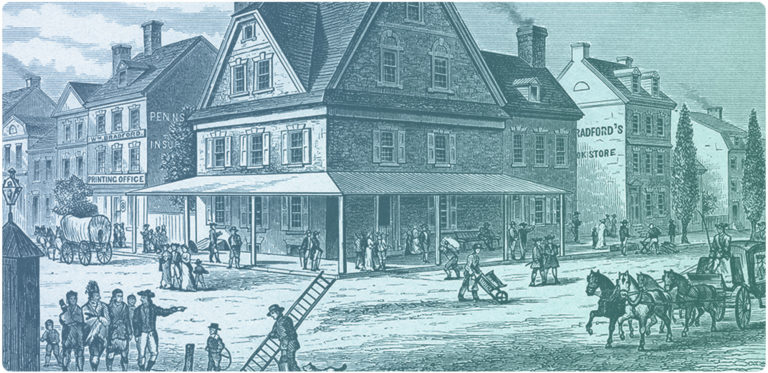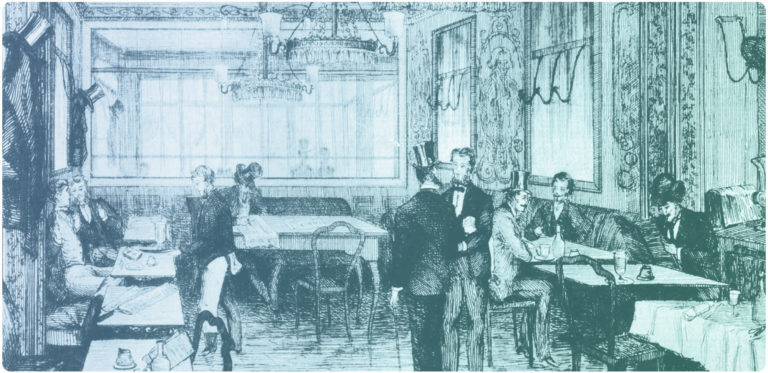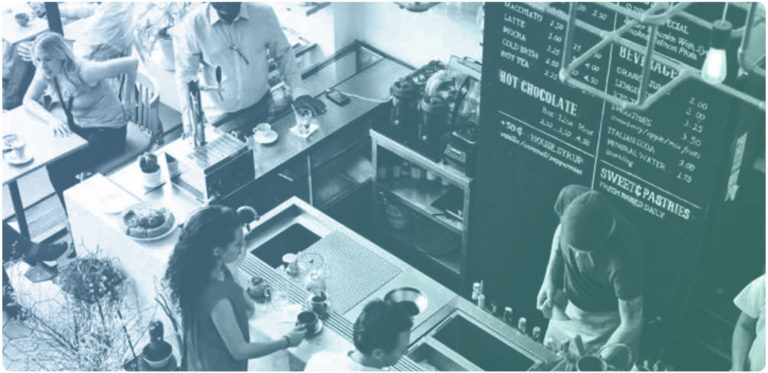

OUR STORY
People Fuel Innovation
We have truly built some incredible things. We built the wheel around 5,500 years ago, and its original discovery was actually used for pottery, not transportation. The invention of the wheelbarrow – is usually credited to the ancient Greeks, but the wheel by itself, without any further innovation would not have done much for mankind, rather it was the unification of wheel and axle, which allowed civilization to move forward, and eventually go on to build even greater things.
Not much more than 360 years ago, another Greek named Pasqua Rosseé opened the first ever coffee house in the heart of London, England. People from all backgrounds swarmed to the coffeehouse to meet, greet, think, write, collaborate and invent, all while fueling themselves with coffee. This collaborative cowork coffee culture provided a catalyst for deep thought, sophistication and productivity, and by the dawn of the eighteenth century, coffee houses were said to be in the thousands.

ChARACTER AND COMMUNITY
Early coffeehouses were not replicas of each other; many had their own distinct character, yet community and what we today refer to as coworking, was clearly visible and strong throughout. On entering Don Saltero’s Chelsea coffeehouse you would notice the walls adorned with exotic art of animals, a talking point for local gentlemen scientists; at Lunt’s in Clerkenwell Green, patrons could sip coffee, have a haircut and enjoy a fiery lecture on the abolition of slavery given by its barber-proprietor.
Conversation, coworking and collaboration were the pillars of these coffee houses. From coffee houses all over London, Samuel Pepys recorded fantastical tales and metaphysical discussions – of voyages “across the high hills in Asia above the clouds” and the futility of distinguishing between a waking and a dreaming state. A cohesive community with media and communication as founding principles made up coffeehouse culture yet both seem alien to us today. People disconnect themselves to the coffee house, and silo themselves to each other with noise cancelling headphones, in an attempt to create the environment they want, in a place they need.

THEY INSPIRED BRILLIANT IDEAS
Back then, coffee houses brought people and ideas together; they inspired brilliant ideas and discoveries that would make Britain at the time the envy of the world. The first stocks and shares were traded in Jonathan’s coffee house by the Royal Exchange; merchants, ship-captains, cartographers, and stockbrokers coalesced into Britain’s insurance industry at Lloyd’s on Lombard Street; and the coffee houses surrounding the Royal Society galvanized scientific breakthroughs. Isaac Newton once dissected a dolphin on the table of the Grecian Coffeehouse. It was the coffee house, not just the coffee, that used to be the epicenter of creativity for people to build forward momentum in an attempt to innovate and create a brighter future.
But how much of this burst of innovation can be traced back to the drink itself? For those of us accustomed to silky-smooth flat whites brewed with mathematical precision in one of London’s independent cafes, the taste of eighteenth-century coffee would be completely unpalatable. People in the eighteenth century found it disgusting too, routinely comparing it to ink, soot, mud, damp and, most commonly, excrement. But it was addictive, a mental and physical boost to punctuate the working day, and a gateway to inspiration; the taste was secondary. Today, the taste is primary; and community, infrastructure, innovation and collaboration secondary. We’ve lost our way, and the modern patron; the dreamer, the innovator, the writer, the connector, is crying out for what we must responsibly deliver.

WE MUST REMEMBER THE PAST TO FORGE OUR FUTURE
The flavors found in the latest incarnation of coffee shops today are undoubtedly superior to the past, but the vanishing opportunities for intellectual engagement and spirited coworking and collaboration with colleagues or even strangers have been quite a trade-off. Furthermore, the people that now flood coffee houses during a period of technological superiority combined with workforces that are being transformed remotely and virtually, with innovators and entrepreneurs who are being activated more efficiently, are initially displaced, settling for what we deem modern, because of an enhancement in taste, yet is more outdated than perhaps it’s very origin.
It was 5,500 years ago we unified the wheel and axle to make possible early forms of transportation, today we must unify coworking tools and coffee houses to power and accelerate modern forms of innovation, productivity, and community.



